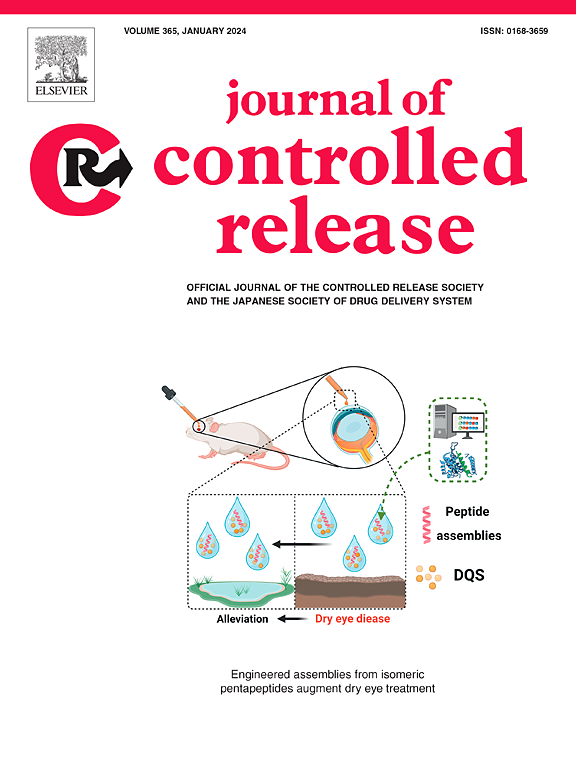Brain-targeting biomimetic nanozyme enhances neuroprotection in ischemic stroke by remodeling the neurovascular unit
IF 10.5
1区 医学
Q1 CHEMISTRY, MULTIDISCIPLINARY
引用次数: 0
Abstract
Dysfunction of the neurovascular unit significantly impacts the prognostic outcomes of ischemic stroke. However, effective strategies to comprehensively modulate the neurovascular unit have yet to be developed. In this work, we introduce a brain-targeting biomimetic nanozyme, A@HPB@THSA, designed to mitigate neurovascular unit dysfunction following ischemia/reperfusion. Specifically, aspirin is encapsulated within hollow Prussian blue nanozyme, which is subsequently modified with brain-targeting T7 peptide-conjugated human serum albumin, ultimately forming the composite A@HPB@THSA. The overexpression of transferrin receptors on cerebral vascular endothelial cells, along with compromised blood-brain barrier (BBB) permeability, facilitates the accumulation of A@HPB@THSA at cerebral ischemic lesions. The hollow Prussian blue nanozyme component effectively scavenges reactive oxygen species in ischemia/reperfusion-affected brain cells. While the aspirin component inhibits platelets aggregation and neutrophils infiltration, thereby preventing microvascular “no-reflow” and preserving the integrity of the BBB. In rat models of transient middle cerebral artery occlusion, A@HPB@THSA demonstrated comprehensive modulation of the neurovascular unit, including reduced BBB permeability, promotion of microglia polarization toward an anti-inflammatory phenotype, and enhanced neuronal survival. This work provides a promising platform to reverse dysfunctional neurovascular unit for ischemic stroke treatment.

求助全文
约1分钟内获得全文
求助全文
来源期刊

Journal of Controlled Release
医学-化学综合
CiteScore
18.50
自引率
5.60%
发文量
700
审稿时长
39 days
期刊介绍:
The Journal of Controlled Release (JCR) proudly serves as the Official Journal of the Controlled Release Society and the Japan Society of Drug Delivery System.
Dedicated to the broad field of delivery science and technology, JCR publishes high-quality research articles covering drug delivery systems and all facets of formulations. This includes the physicochemical and biological properties of drugs, design and characterization of dosage forms, release mechanisms, in vivo testing, and formulation research and development across pharmaceutical, diagnostic, agricultural, environmental, cosmetic, and food industries.
Priority is given to manuscripts that contribute to the fundamental understanding of principles or demonstrate the advantages of novel technologies in terms of safety and efficacy over current clinical standards. JCR strives to be a leading platform for advancements in delivery science and technology.
 求助内容:
求助内容: 应助结果提醒方式:
应助结果提醒方式:


